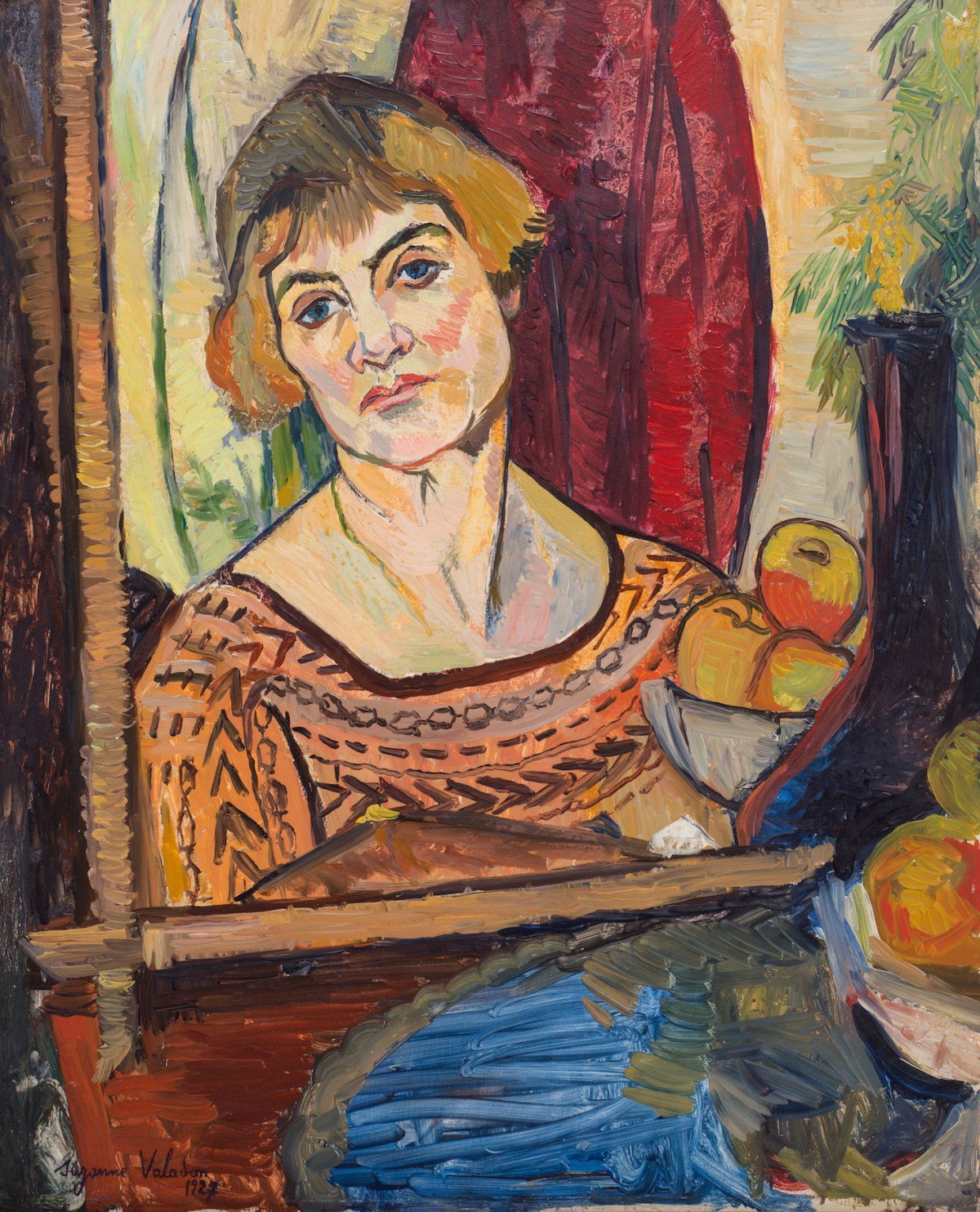Carly Steiner
An Altered Gaze: Looking from the Eyes of Women
An Altered Gaze: Looking from the Eyes of Women analyzes one of the most significant subjects within art history, the depiction of the female form. The research I have conducted reflects the distinguished life’s work as both a model and painter of Suzanne Valadon (1865-1939). After working as an artist’s model for around 10 years and becoming a painter herself, Valadon uses direct perspective, challenging the traditional representation of the female nude which tended to be driven by male objectification. Valadon’s paintings particularly reinvent mastered themes such as female bathers, domestic spaces, and the reclining nude. Her work focuses on the female experience as engaged individuals taking part in social relationships and activities, depicted as a specific moment of action. As she confronted viewers with confidence, Valadon embraced her own nakedness to resist sexual commodification, reclaiming how her own image has been depicted.
Reclining Nude, 1928, Oil on canvas, 60 x 80.5 cm, Metropolitan Museum of Art: New YorkConfronting the viewer with her gaze, the female subject lays back but obscures her body as she crosses her legs and covers her breasts. Her position may suggest shyness and simplicity as Valadon depicts the woman in a natural state upon the sofa. The colors within the composition specifically looking at the woman’s skin tone alongside the green of the furniture’s fabric are examples of Valadon’s eye for a beautiful palette.
The Abandoned Doll, 1921, Oil on canvas, 129.5 x 81.3 cm,
National Museum of Women in the Arts: Washington DCPortraying an intimate scene, Valadon shows a girl and her mother seated together on a bed. With a symbol of the girl’s childhood laying on the floor, the subject instead holds a mirror, inspecting herself as she looks upon her own maturing body. Depicting a significant moment of transition in her life, Valadon presents the universal narrative of a girl’s adolescence journey.
Joy of Life, 1911, Oil on canvas, 122.9 x 205.7 cm, Metropolitan Museum of Art: New YorkIn a landscape painting, Valadon depicts four nude women who share a space with a nude man who watches them. Women as nature was a common theme at the time, however this composition resembles the idea that the figures are surrounded by nature but not equivalent to it. As the figures attempt to disrupt the male gaze, they separate themselves from the male spectator.
Adam and Eve, 1909, Oil on canvas, 162 x 131 cm, Centre Pompidou: ParisAs the first painting to be publicly exhibited by a female artist depicting a nude couple, this work created by Valadon shows a younger version of herself and her lover at the time. Perhaps serving as a metaphor for her relationship with a much younger partner, as if it were resembling the forbidden fruit. The male’s genitals had to be covered after Valadon originally completed the work for it to be approved by the Salon for exhibition in 1920.
The Blue Room, 1923, Oil on canvas, 90 x 116 cm, Centre Pompidou: ParisWith the rise of new gender role ideologies at the close of WWI, Valadon depicts a clothed woman lounged back comfortably representing a sparkling confidence. As books sit next to her bare feet and a cigarette hangs out of her bold lips, this woman symbolizes the New Woman, seeking freedom from a dominantly male conquered world.
Carly Steiner
(she/her)
Art History ‘22
Within the past four years studying at Tyler, I have developed a strong interest for modern painting, along with work created by artists with identities who experience intersectionality disadvantage. My main topics of research include the depiction of the female form and modernity, with focus aimed towards use of color, paint application, and the representation of how the world feels rather than how it is naturally seen. When not spending time looking at art, I enjoy exploring outdoor spaces, cooking, and watching movies with my friends.








